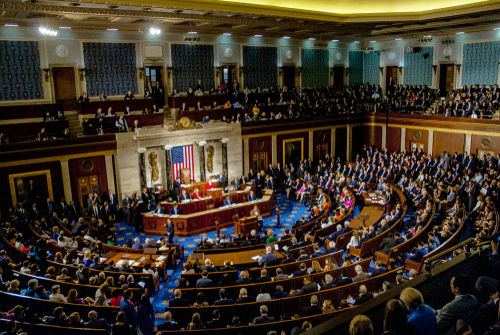Three Democrat lawmakers were physically trapped and refused entry at Brooklyn’s federal detention center, spotlighting the ongoing clash over border security and exposing how recent policy shifts are finally putting teeth back into American immigration enforcement.
Democrat Lawmakers Blocked at Brooklyn Detention Center
On August 6, 2025, Representatives Adriano Espaillat, Nydia Velázquez, and Daniel Goldman attempted to conduct an oversight visit at the Metropolitan Detention Center in Brooklyn. Facility agents refused entry, leaving the lawmakers and their advocacy group supporters trapped for 20–30 minutes between a fence and the building. This bold response from federal authorities highlights a new era of policy enforcement, where demands for unchecked congressional access to active federal facilities are increasingly challenged as the executive branch reasserts operational control.
Repeated attempts by these lawmakers to enter federal detention sites—most recently at Manhattan’s ICE facility on June 8, 2025—have met similar resistance. These confrontations are not isolated incidents but part of a broader trend since the Trump administration’s return, reflecting a clear pivot toward strict enforcement and a reluctance to accommodate what many see as political stunts designed to undermine immigration law and facility security. While critics decry these blockades as anti-democratic, supporters argue they restore long-overdue discipline to the nation’s immigration system.
Trump Administration’s Immigration Overhaul: Restoring Order at the Border
Since President Trump’s inauguration in January 2025, the administration has moved aggressively to fulfill promises of border security and immigration control. Major executive orders have targeted unauthorized entry, established national deportation quotas, and empowered local law enforcement through expanded 287(g) agreements. The administration declared a border emergency, tripled annual deportations, and ended discretionary programs like parole and Temporary Protected Status for several nationalities. These actions represent a dramatic break from previous years of open-door policies, signaling that the era of catch-and-release and sanctuary city defiance is over.
Financial and legislative changes have reinforced these priorities. The “One Big Beautiful Bill Act,” signed this July, quadrupled the immigration detention budget, authorized family detentions, and imposed new restrictions on public benefits for non-citizens. Critics warn these measures affect mixed-status families and low-income communities, but supporters argue that such tough reforms are essential to reestablish the rule of law and discourage illegal entry. The administration’s willingness to penalize state and local jurisdictions that refuse cooperation underscores a no-nonsense approach to federal immigration authority.
Oversight, Transparency, and Constitutional Tensions
The refusal to admit congressional delegations—particularly those aligned with advocacy groups—has drawn sharp criticism from left-leaning lawmakers and immigration activists. They cite constitutional oversight responsibilities and decry what they call a “dangerous precedent” for executive overreach. Yet many legal analysts and security experts maintain that facility access must be balanced against operational integrity, staff safety, and the prevention of politically motivated disruptions. The Trump administration’s stance is that restoring control at the border and in detention centers requires limiting outside interference, especially when it threatens to compromise security or facilitate grandstanding for partisan gain.
Advocacy groups and their political allies will continue to escalate demands for unfettered access and policy reversal. However, the landscape has shifted. The current administration’s willingness to use federal funding, law enforcement partnerships, and legislative reforms to back up its agenda signals a lasting transformation of U.S. immigration policy. For many Americans frustrated by years of weak enforcement and unchecked illegal immigration, these developments are a welcome affirmation that their voices—and the rule of law—are finally being heard.
Broader Impact: Reclaiming Sovereignty and Security
Short-term, these facility confrontations stoke media attention and fuel partisan debate, but the long-term significance is clear: the U.S. is reestablishing its sovereign right to determine who enters and remains within its borders. Detention centers will operate under strengthened protocols, sanctuary jurisdictions face real penalties, and congressional oversight will be subject to the same legal boundaries as any other federal function. While advocacy groups promise ongoing resistance, growing numbers of Americans see this as a necessary correction—a return to constitutional principles, national security, and common sense in government. As the dust settles, the message is unmistakable: the era of lax enforcement and open borders is over.
Sources:
Click this link for the original source of this article.
Author: Editorial Team
This content is courtesy of, and owned and copyrighted by, https://www.rightwinginsider.com and its author. This content is made available by use of the public RSS feed offered by the host site and is used for educational purposes only. If you are the author or represent the host site and would like this content removed now and in the future, please contact USSANews.com using the email address in the Contact page found in the website menu.








